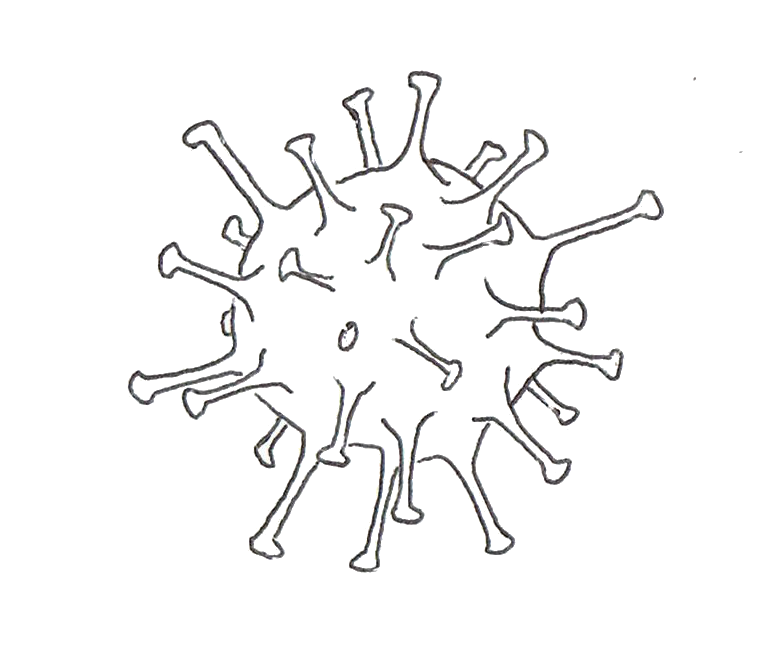
The ageing body at risk
From 2004 to 2008, I conducted research on the area of ageing female bodies and their hormone systems. Inspired by Margaret Lock’s concept of local biologies and Emily Martin’s work on the immune system, I tried to understand how (and if) women at the age of 50-65 experience menopause as a hormonal deficiency situation, and how they negotiate their embodied experience with biomedical experts and therapies. Menopause, as a biomedical concept rooted in the early nineteenth century, is defined as occurring 12 months after the last menstrual bleed (thus it can only be diagnosed in retrospect). The bleeding ceases due to the decline of the ovarian production of oestrogens, a process associated with characteristic symptoms. It equals the loss of fertility. While biomedicine does not conceptualise old and middle age as a disease as such, it stresses the manifold and heterogeneous risks associated with the (female) ageing process (in Germany, the ‘male menopause’ has not yet made its appearance within the public conscience or medical practice). This includes short term risks and discomfort such as hot flashes, depression, mood swings, loss of libido and sleep, or night sweats, but also long term risks such as heart disease or osteoporosis, as well as risks associated with hormone replacement therapy such as thrombosis, breast cancer, and stroke.
In Germany, women at the age of 50 are encouraged to meet their gynaecologist at least once a year. In my ethnographic fieldwork, I followed them into these meetings, I also talked with women who refused to see their doctor for what they perceived as a ‘normal’ bodily experience, and I met their gynaecologists to understand the many medical perspectives on menopause. Surprisingly, there did not seem to be any sort of consensus, neither among the women themselves, nor among their doctors, concerning the definition of menopause, its beginning, its ending, or the adequate way to deal with the ‘hormonal deficiency’ situation. Many of the women I interviewed had no idea of whether they were actually menopausal or not, or how they should know about this. Their embodied experiences varied considerably, with some of them suffering from hot flashes and depression for years, and others without any symptoms at all. As the reliability of the available diagnostic tools was discussed controversially by gynaecologists, menopause seemed to result from a process of contextualisation: the interplay of chronological age and gender enabled women and their doctors to diagnose heterogeneous symptoms as menopausal symptoms.
The medical consultations revolved around the question of whether or not the patient should undergo hormone replacement therapy. Both options were each ascribed with specific risks: hormone therapy being associated with breast cancer or thrombosis, while untreated menopause was discussed as being related to osteoporosis and heart disease. In most of the cases, the gynaecological consultation was conceptualised as a risky decision making process. Potentially, both options could result in health and well-being, but also in disease or even death. As rationally calculating and responsible individuals, women actively took part in this process. They searched for medical information, tried to reduce their alcohol intake, or analysed their genetic predisposition. To my surprise, even those women who refused to see their doctors on a regular basis, or simply mistrusted biomedicine in general, had adopted a similar calculative and rational, risk-orientated behaviour. The concept menopause, here, bridges the boundaries between different areas of bodily experience, biomedical technologies, and knowledge about a hormonal deficiency situation, rendering the ageing body governable by and through practices of risk management.
Thus far, the following publications have emerged from this research:
• Hormone und Self-Fashioning: Biomedizinische Deutungsmuster als Mittel der Selbstkonzeption alternder Frauen. In: P. Eitler & J. Elberfeld (eds.): Eine Zeitgeschichte des Selbst. Bielefeld 2015: transcript, 373-390 (more information).
• Wider die Natur? Oder ein normaler biologischer Prozess? Kulturanthropologische Perspektiven auf die weiblichen Wechseljahre. In: kultur & geschlecht 6 (2010) (pdf).
• Organisiertes Risiko. Wie die Wechseljahre zum Bilanzierungsobjekt werden. In: K. Liebsch & U. Manz (eds.): Leben mit den Lebenswissenschaften. Wie wird biomedizinisches Wissen in Alltagspraxis übersetzt? Bielefeld 2010: transcript, 199-218 (more information).
• Körper ohne Gleichgewicht. Die kulturelle Konstruktion der Menopause. Münster 2009: LIT Verlag (Forum Europäische Ethnologie) (more information).
• Wie viel Prävention ist möglich? Zur Rationalität gesundheitsbewussten Handelns von Frauen der Generation 50+. In: B. Blättel-Mink & C. Kramer (eds.): Doing Aging. Weibliche Perspektiven des Älterwerdens. Mannheim 2009: Nomos, 79-91 (more information).
• doing menopause. Wie „normal“ sind die „normalen“ Wechseljahre? In: Fama 3 (2008), 3-5.
• Zu alt, um jung zu sein – Die Zeit der Wechseljahre. In: Kuckuck. Notizen zur Alltagskultur 1 (2008), 47-50.
• Ein bisschen wie ein Jungbrunnen? Die kulturelle Konstruktion der Menopause als Hormonmangelkrankheit. In: H. Hartung; D. Reinmuth; C. Streubel & A. Uhlmann (eds.): Graue Theorie. Die Kategorien Alter und Geschlecht im kulturellen Diskurs. Köln/Weimar 2007: Böhlau, 129-148 (more information).
• „No simple matter“ – Frauen, Körper und das Altern. In: Fraueninfo 17 (2006), 29-32.
